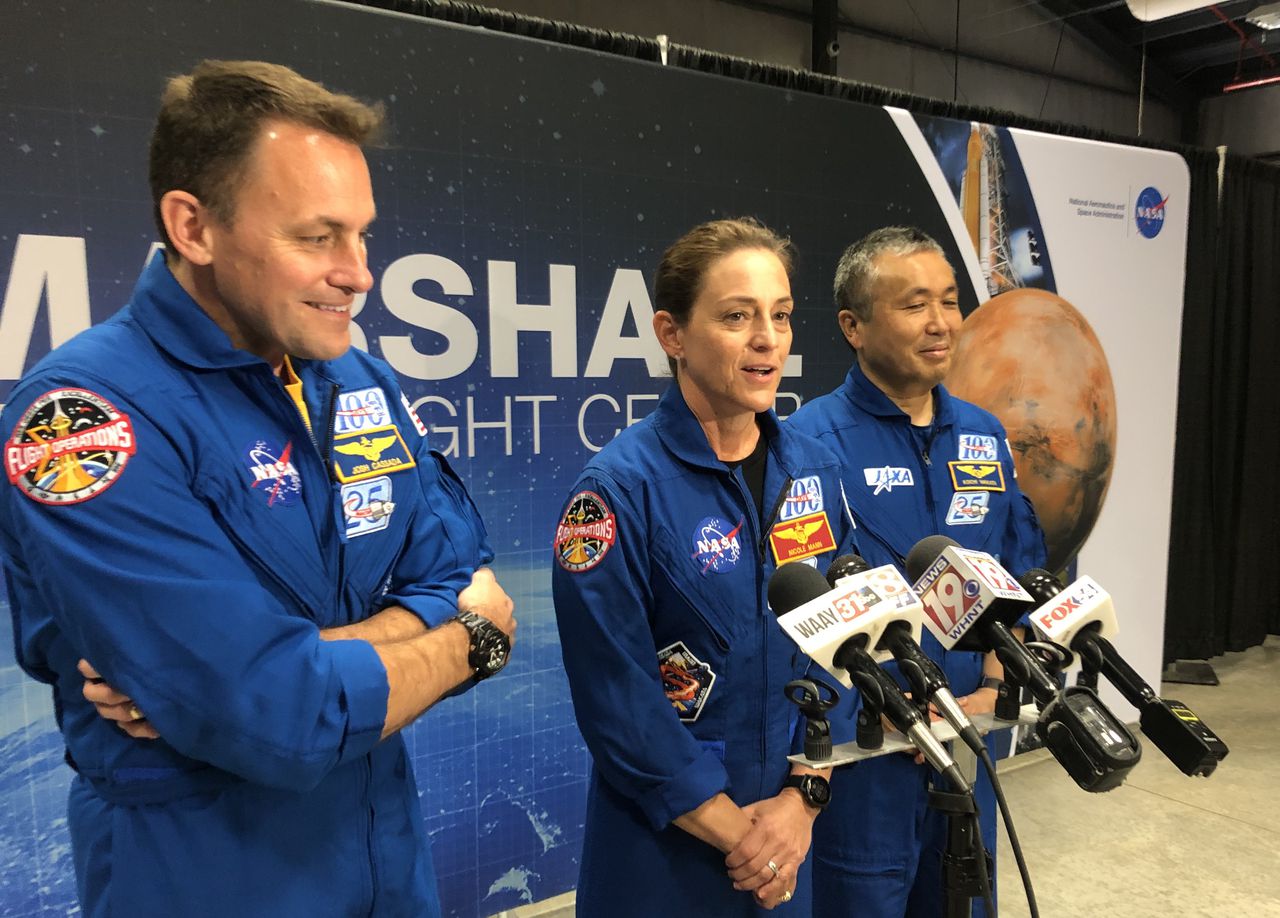Space station experiments to help fuel Artemis deep-space missions
The NASA employees kept coming in at the Activities Center and more chairs kept getting added and eventually a standing-room only crowd was in place and was this a Taylor Swift concert?
No, not on a Monday morning at Marshall Space Flight Center Huntsville. Then again, it was sort of the NASA equivalent. Three astronauts who in March returned from the International Space Station were the guests, on stage and mic’d up to recount the highlights of their 157 days orbiting the earth to the people who supported them on the ground.
The astronuats – NASA’s Nicole Mann and Josh Cassada and Japanese Aerospace Exploration Agency’s Koichi Wakata – narrated a video of their mission, telling of station experiments and space walks and even how you shower in space (essentially, you don’t).
Wakata – a self-professed baseball fan – in the video even gave a one-man baseball demonstration in microgravity: He pitched the ball, then outraced it to the other end of a module and picked up a bat. Then he hit the ball and scurried back down the module to catch it.
“That’s only possible in space,” he said.
Indeed.
But these days, it’s a fascinating place where NASA finds itself. Not only is there the missions to the ISS but now the Artemis moon program has had its successful inaugural flight and is planning for its first crewed mission. The rockets are bigger and the objectives are bigger. And you don’t have to be a rocket scientist to realize that.
Still, low-earth orbit and deep space exploration are not unrelated.
“We were up there when Artemis I launched (last November),” Cassada said. “We were really hoping that we’d be going over the Kennedy Space Center around that time. We weren’t. We were on the opposite side of the planet. But it was really exciting to be up there while that’s happening. Because the work that we do in low earth orbit is really to enable the next generation of spaceflight. The stuff that isn’t the science of the living up there, that’s the stuff we need to get really good at before we go to deep space.
“And that’s the beauty of the International Space Station. We can test and develop and advance all those technologies. Because we’ve got the advantage of being close to home. And having the support — no time delay — being able to come home quickly if we needed to, in case of emergency, these are all luxuries that we’re not going to happen when we get to the deep space. So for me, it felt really good to just be a small part of that next generation of spaceflight.”
During their presentation, the astronauts touched on ISS experiments growing yeast and yogurt and Wakata spoke of his work with plants. Yogurt is considered an integral food in space travel because it is rich in calcium and astronauts are subject to a loss of bone mass density.
One experiment was the Veg-05 investigation, which NASA said “expected to help define light colors and horticultural best practices to achieve high yields of safe, nutritious dwarf tomato fruit to supplement a space diet of pre-packaged food and to assess any psychological impacts that growing plants might have on the astronauts.”
“We need to have this continuous fresh food production in space, especially on a long duration flight to Mars,” Wakata said. “So station is a perfect testbed to demonstrate all kinds of technologies that are needed. So we tested the Veg-05 experiment that we tested with different kinds of light, and also nutrition system and fertilizer. So results of these will be fed into this new production system. And those are really important, to have this good nutrition for the astronauts. But also psychologically, it’s good to have the green in front of you. In this space station, there’s no plants and animals other than us. So psychologically, it’s very important.”
